The mending series 02: Patching (wovens) by hand
My favorite way to fix + reinforce worn out textiles
Hi hello!
I’m excited to be back in your inbox/substack feed for my second mending tutorial. There’s a lot of new faces here and I’m honored you’ve trusted me with your emails + attention.
One of my favorite parts about mending as a creative practice is that there’s often not one singular “right” way to mend something. However, there are best practices and I know it can be confusing to know the best ways to go about fixing something if you aren’t familiar with clothing construction. In my first post in this series we learned about darning, and today we’ll go over my favorite way to patch things by hand. When it comes to the decision of if I’m going to darn or patch a hole in a garment, a few things influence my decision.
For knitwear like sweaters or small holes in stretchy knits like a jersey t-shirt I usually turn to darning, whereas for bigger, more substantial holes in woven fabrics I turn to patching (For a primer on knits vs. wovens you can watch this 5 min video). I also like darning for small holes in wovens, especially in harder to patch areas, like on a back pocket or near the edge of a garment.
Today’s project
I bought these Levis 501s at a vintage store in Lisbon last summer that are the perfect fit for me, but they had some serious wear on them. But of course that just made me excited that I could try a variety of mending methods on them. I’ve already repaired one leg with patches, but I’ve saved the other one to film a video so that you all can follow along.
Let’s jump into the tutorial:
A chatty show and tell + Materials advice:
More materials advice
Re: needles and thread: I really encourage you to see if your town has a local craft store/quilting store/yarn shop where you can purchase these. There will probably be a nice person there who can help you find what's best for your project.
The needle I’m using in this tutorial comes from the long darners Merchant and Mills set that I got at Brooklyn General Store, and the sashiko thread I’m using I also purchased there. A lot of needles that are longer and have a bigger eye like this are also labeled “sashiko needles”
Fabscrap is a great option (shop online for scrap packs or in the Brooklyn warehouse) for patch fabrics since they get a lot of fabric samples from the fashion industry.
If not from fabscrap, my patch fabrics come from scraps from other projects (save those leftovers after you crop something). I keep them all in one bin so they are easy to sort through later.
I will talk all day about Creative reuse stores - see if there’s one in your area here
I haven’t used these yet, but these mending templates look great if you want even stitches but don’t like measuring like me.
Some further patching inspiration from Pinterest
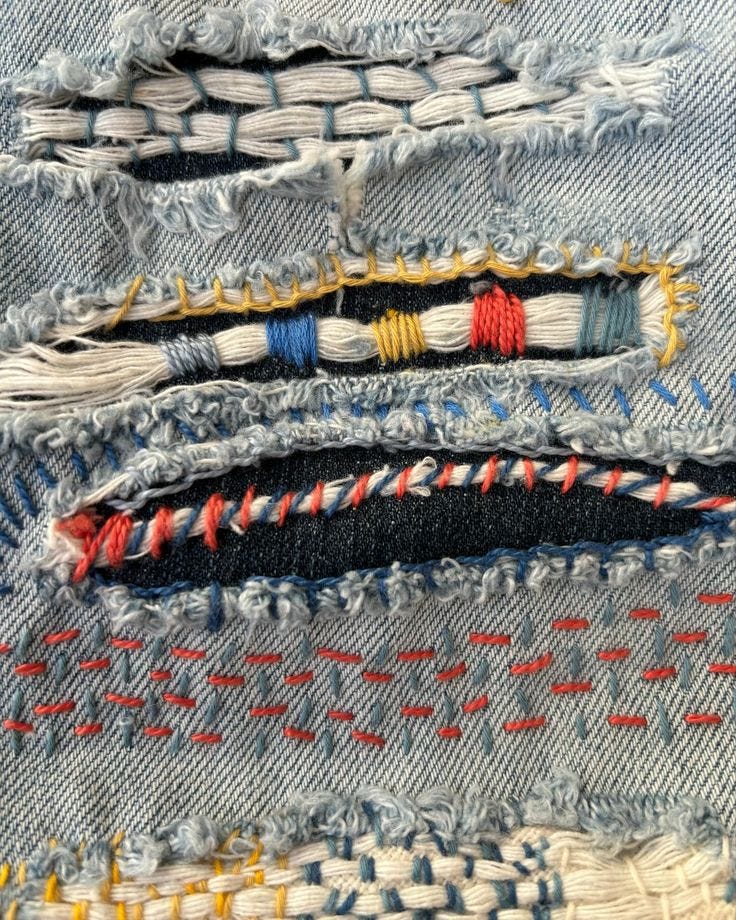
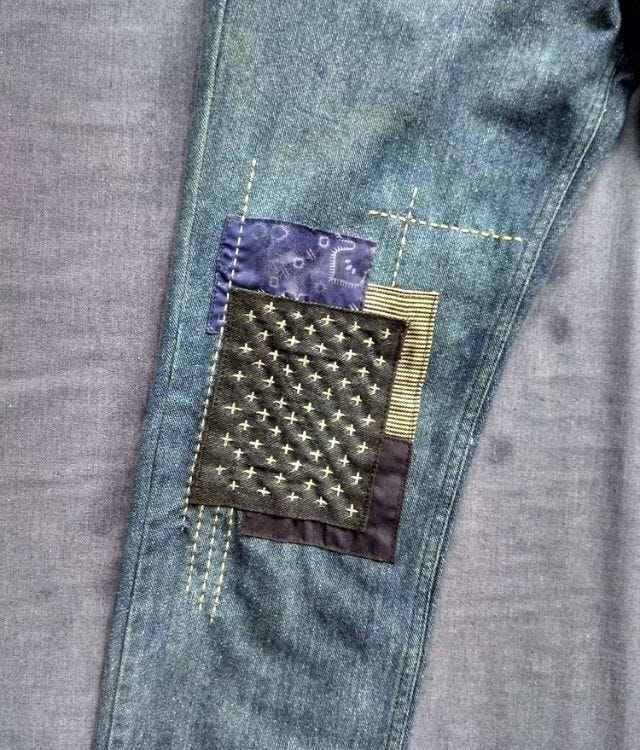
A note on paywalls and monetization for those interested
I thought I’d share some of the thoughts swirling around in my head re: monetizing this. Feel free to chime in in the comments as I’m curious how others have navigated this.
I want to create free resources for people and am against placing a paywall on my posts or making them for paid subscribers only. I’m not opposed to this in general, it just doesn’t feel right for me personally. I do have a full time job so this substack can be an extension of my hobbies.
I also think it’s very fair for folks to want to be compensated for the work they put out in the world and create for other people, and I feel some of that pull personally as well.
Because of this, I’ve decided to not create a paid subscriber option for this newsletter, but I set up a “Buy me a coffee” for folks who want to contribute to these resources. The other thing I’ve thought about for the future is keeping all these tutorials free, but turning on a paid “subscriber chat” where folks can ask me questions and get personalized advice and help trouble-shooting a mend. Let me know if this is something you’d be interested in!
What’s next?
I’m all ears to hear what questions you all have for me and what you’d like to learn to mend. Or, feel free to simply introduce yourself and tell me something about you in the comments! In the next post in this series we'll continue fixing these jeans by patching and reinforcing the crotch and butt with a sewing machine.
Cheers!
Danielle




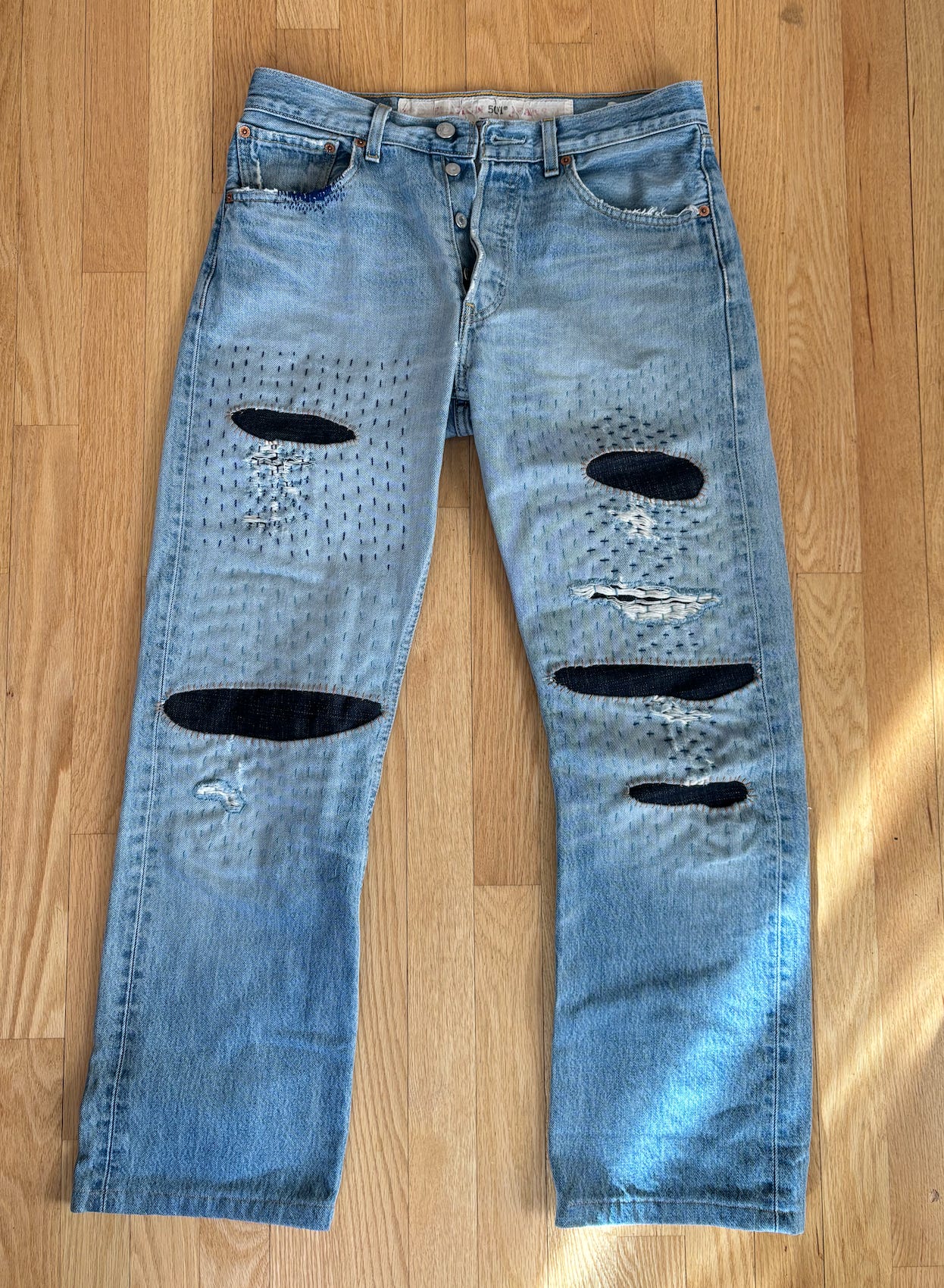
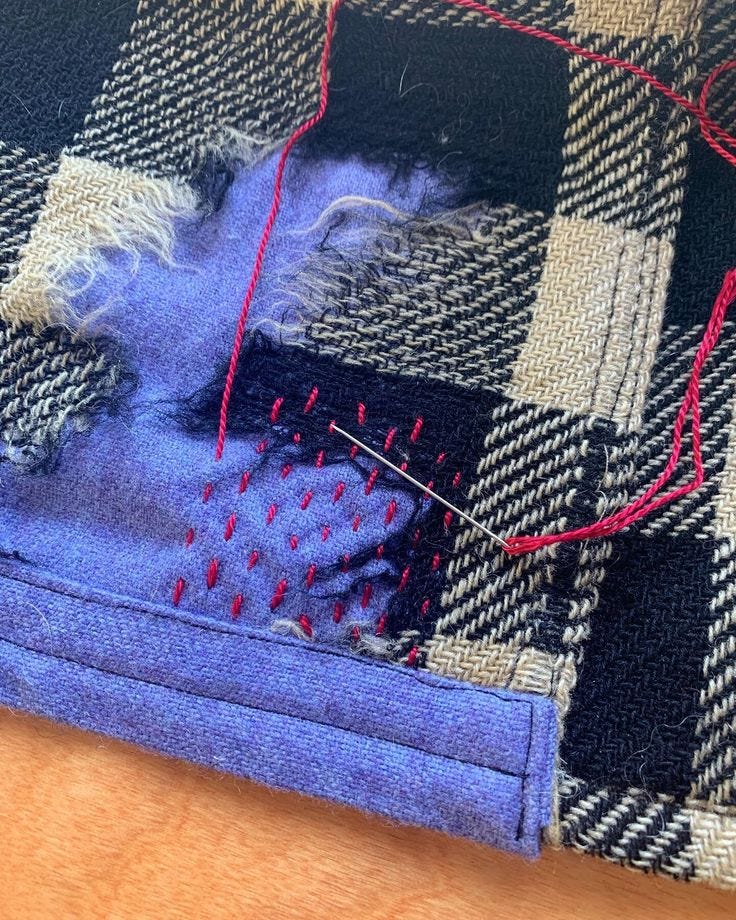
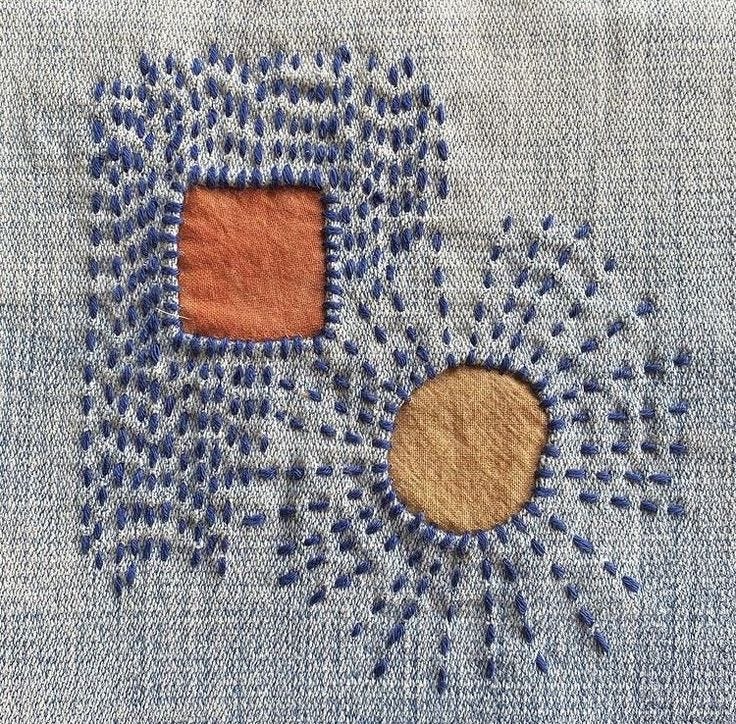
Greetings! I found you when I searched for "tutorial." I currently do a weekly live FB/YT show that includes a tutorial - produced from my quilt shop. I am fairly new to Substack with a B2B newsletter for shop owners. I was wondering if Substack could be a place to host a follow up to the live video and hence the search. I immediately paused my research when I saw your tutorial. How beautiful! We teach Sashiko at our store and have a monthly club for handwork enthusiasts. I am interested to know your thoughts on plopping my tutorials into Substack.
Hi! I am new to mending and sewing and am so glad to have found your newsletter. I have pants with a pocket and crotch in need of mending so I am excited for next week! Thanks for sharing your knowledge.